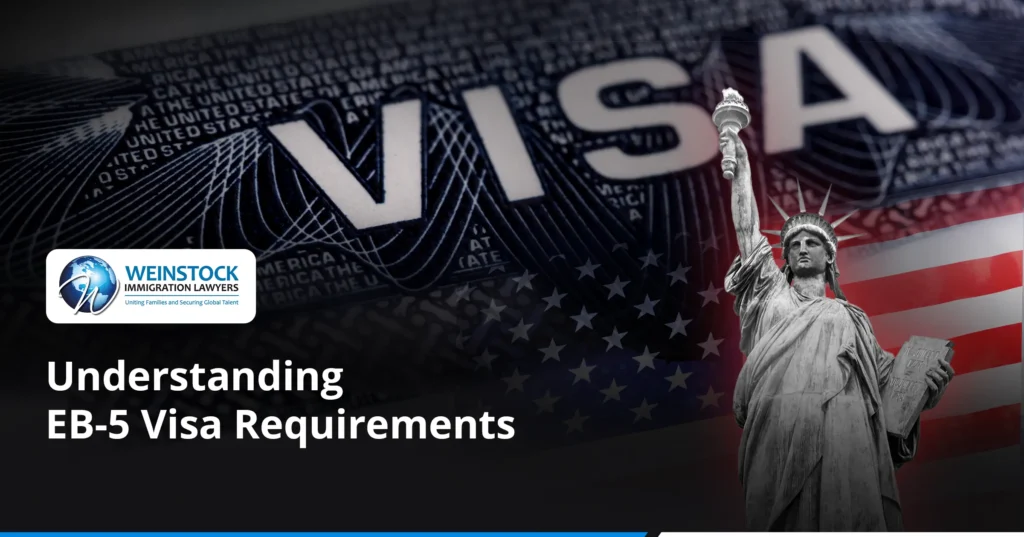For investors seeking U.S. permanent residency, the EB-5 Immigrant Investor Program provides a unique pathway. By investing in a U.S. business and creating jobs, foreign investors and their families can obtain a green card.
If you’re in Georgia or Alabama, understanding the EB-5 visa requirements is crucial to making informed investment decisions. This guide covers investment thresholds, job creation rules, the application process, and recent changes to the program.
What is the EB-5 Visa Program?
The EB-5 visa is a U.S. employment-based green card program that allows foreign investors to gain permanent residency by investing in the American economy.
Key Benefits of the EB-5 Visa
- Permanent Residency: Investors, spouses, and children under 21 receive green cards.
- No Sponsorship Needed: Unlike other employment-based visas, no employer sponsorship is required.
- Path to Citizenship: After five years, EB-5 green card holders can apply for U.S. citizenship.
- Freedom to Live Anywhere: No requirement to live where the investment is made.
EB-5 Visa Requirements
To qualify for an EB-5 visa, investors must meet three primary requirements:
1. Minimum Investment Amount
- $1,050,000 for standard investments.
- $800,000 for investments in a Targeted Employment Area (TEA).
- TEAs include rural areas or regions with high unemployment.
2. Job Creation Requirements
- The investment must create or preserve at least 10 full-time jobs for U.S. workers.
- Jobs must be created within two years of conditional residency approval.
- Investments through Regional Centers allow indirect job creation.
3. Lawful Source of Funds
- Investors must prove that investment funds were obtained legally.
- Acceptable sources include business profits, salary, real estate sales, or inheritance.
- Required documents: tax returns, business financials, sale agreements, and legal affidavits.
Investment Options: Direct Investment vs. Regional Centers
1. Direct Investment
- Investors create their own business or invest in an existing company.
- The investor must be actively involved in managing the business.
- Job creation must be direct (i.e., hiring 10+ full-time employees in the business).
2. Regional Centers
- USCIS-approved organizations that pool multiple EB-5 investments.
- Allows for passive investment, meaning investors don’t have to run daily operations.
- Regional Centers facilitate indirect and direct job creation.
For Georgia and Alabama investors, many designated TEAs exist, particularly in rural areas and growing economic hubs like Birmingham and Atlanta.
EB-5 Application Process
Step 1: File Form I-526 (Immigrant Petition by Investor)
- Prove investment eligibility with business plans, financial records, and job creation projections.
- Processing time: 12-24 months.
Step 2: Apply for Conditional Green Card
- If in the U.S.: File Form I-485 (Adjustment of Status).
- If outside the U.S.: Apply for an EB-5 visa through consular processing.
- Conditional residency lasts 2 years.
Step 3: Remove Conditions (Form I-829)
- Filed within 90 days before the 2-year green card expires.
- Prove investment has met the job creation requirements.
- After approval, the investor and family receive permanent green cards.
Processing Times & Challenges
How Long Does the EB-5 Process Take?
- I-526 Approval: 12-24 months.
- Conditional Green Card: 6-12 months.
- I-829 Approval (Permanent Green Card): 18-24 months.
Common Challenges & How to Overcome Them
- Visa Backlogs: Investors from high-demand countries like China and India may face delays.
- Job Creation Risks: If a business fails, jobs may not be created. Investing in a trusted Regional Center can reduce risk.
- Source of Funds Issues: Ensure proper documentation to prove the legal source of investment funds.
Recent Changes to the EB-5 Program
2022 EB-5 Reform and Integrity Act
- Increased investment thresholds to $1,050,000 ($800,000 for TEAs).
- Set aside 20% of visas for rural investments, 10% for high-unemployment TEAs, and 2% for infrastructure projects.
- Enhanced fraud protection and oversight for Regional Centers.
Future Changes & Gold Card Proposal
- Discussions on replacing the EB-5 program with a “Gold Card” requiring a $5 million investment.
- No final decision yet, but investors should stay updated.
Case Study: Georgia-Based Investor Success Story
A real estate investor from Atlanta invested $800,000 in a hotel development project in a TEA.
- The investment created 12 full-time jobs.
- The investor and family received green cards within 24 months.
- The business is now generating passive income while providing U.S. residency benefits.
FAQs About EB-5 Visa Requirements
Yes, spouses and children under 21 are eligible for green cards.
The I-829 petition may be denied. Regional Center investments often provide better job creation security.
Not automatically. If you hold a valid work visa (H-1B, L-1, etc.), you can continue working.
All investments carry risk. Work with trusted Regional Centers and immigration attorneys to reduce risk.
Final Thoughts & Next Steps
The EB-5 visa is a powerful opportunity for investors in Georgia and Alabama to obtain U.S. permanent residency through economic contribution. While the process requires careful planning, the benefits—green card security, business ownership, and a pathway to citizenship—make it a worthwhile investment.
Need personalized guidance? Schedule a consultation with an immigration attorney in Georgia or Alabama to discuss your EB-5 eligibility and investment options.

